Wheel spacers are gaining in popularity by the day for a number of reasons. When done right they give off a distinct look that takes the appearance of your car to a whole new level.
It’s not all about aesthetics of course — they also offer a slew of benefits on both the street and the track.
But are wheel spacers safe, and should you be using them on your vehicle? In this comprehensive guide, we’ll break down all there is to know about the much-debated wheel spacer safety.
What Are Wheel Spacers?
Before we dive into wheel spacer safety, let’s get a little more familiar with the units themselves.
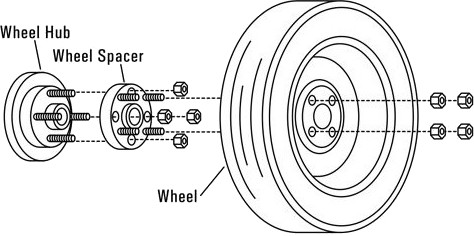
Simply put, wheel spacers are components that attach to a vehicle’s wheel studs, so the tires sit farther out from your hubs. By creating this additional space, they can help to stop your wheels and tires from rubbing against wheel well liners, brakes or other suspension components.
While there are several different types of wheel spacers, they all perform the same function — it’s just that they just attach to the vehicle in a different way.
How Do Wheel Spacers Work?
The spacers sit between the hub flange and your wheel flange, which pushes your wheel further out.
While you can put spacers on either the front or rear axle, your choice will be down to the type of car you have and the size of wheels you’re using.
For example, your staggered wheel setup might mean you are running wider, negative offset wheels on the rear that don’t require any spacers, but your front wheels still need to pushed further outward.
Generally you’re aiming for a better aesthetic and you’ll use spacers to get the perfect wheel fitment.

Different Types of Wheel Spacers
While there are multiple designs available, the four most common are:
- bolt-on hub-centric
- bolt-on lug centric (floating)
- slip-on hub-centric
- slip-on lug centric (floating)
Some are safer for your vehicle than others and it all comes down to how they distribute your vehicle’s weight.
Bolt-On Spacers
With bolt-on spacers, it basically means that the spacers are meshing up and bolting directly to the hub.
There are several advantages that bolt-on wheel spacers provide, namely that you rarely have to worry about your wheel studs being long enough.
In addition to this, bolt-on spacers provide a much closer fitment than slip-on spacers. Because of the tighter fitment, bolt-on spacers are often vehicle specific and utilize your existing studs.
Bolt-on spacers bolt up tightly against your hubs, and your wheels then bolt to these spacers. You’ll generally use them for adjustment of 20mm or more.
Hub-Centric Bolt-On Spacers
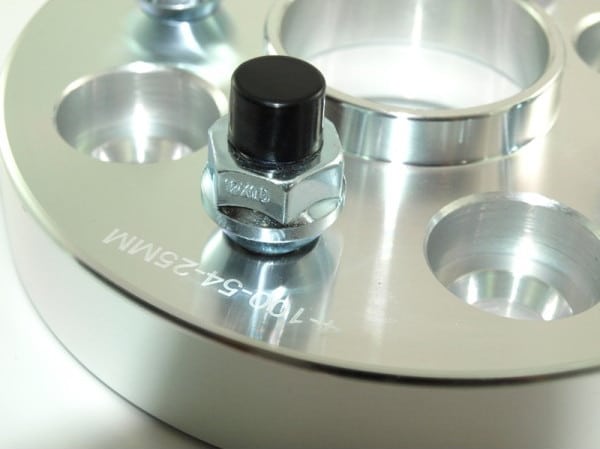
Hub-centric bolt-on wheel spacers work the same way as your regular wheels do and are completely safe to put on your vehicle.
This design bolts onto your hub and slide over the wheel studs, but they also have a lip that fits around your vehicle’s hub. This puts all the pressure right back on the hub, which is the strongest point.
Lug-Centric (Floating) Bolt-On Spacers
Lug-centric bolt-on spacers also bolt directly to the wheel studs of your vehicle. They still provide their own lug nuts for the vehicle to mount to, but unlike hub-centric spacers they don’t have the lip that puts all the torque on the hub.
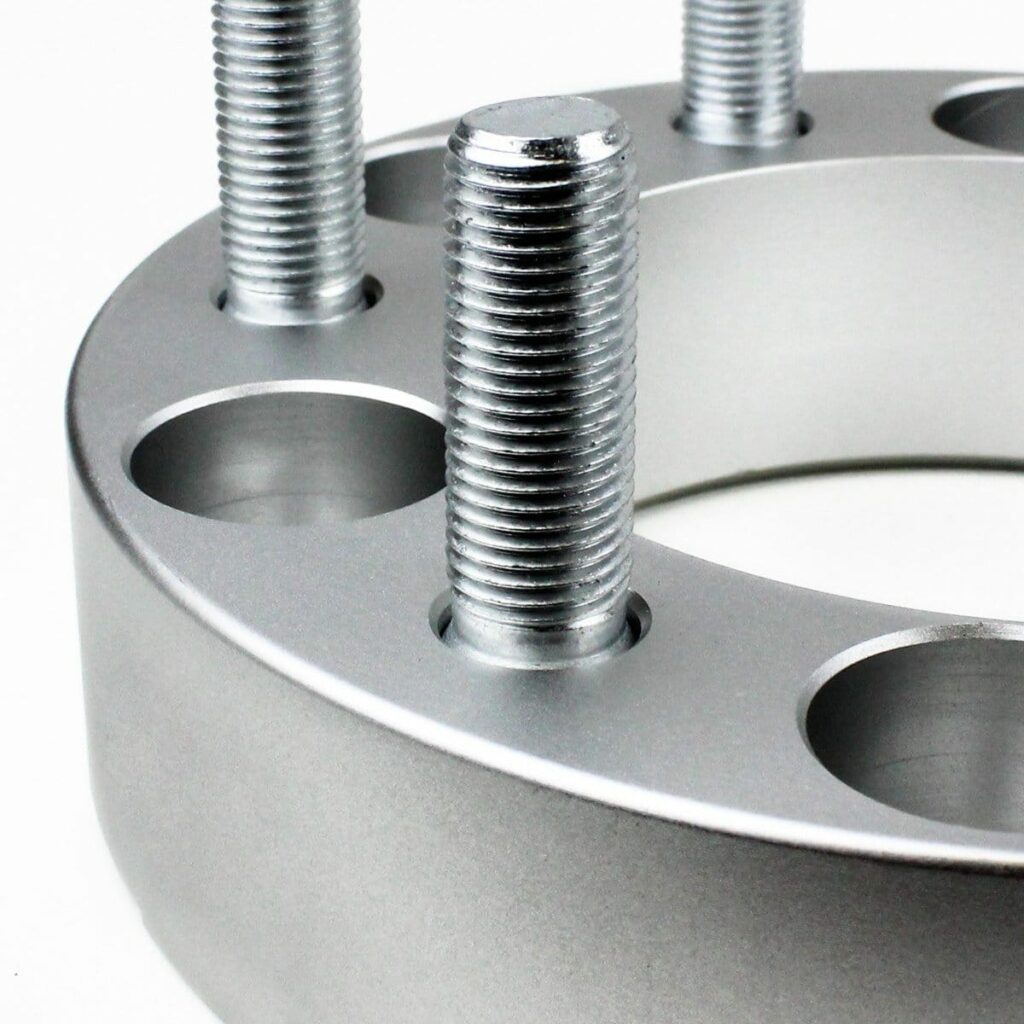
Instead, all that torque goes directly on your vehicle’s wheel studs. This style of spacer are not safe for the simple reason that the manufacturer did not design the lug nuts to handle your vehicle’s entire weight — they manufactured the hub to handle that.
To counter this, some wheel spacer manufacturers will make lug-centric, or “floating,” wheel spacers for vehicles with smaller axles.
While small vehicles with smaller axles can sometimes handle the extra weight on the lugs, it’s just not worth the risk.
In addition to this, this type of spacer can be very hard to center on the hub. Often you won’t notice this at low speeds, but once you’re doing more than around 60 mph, chances are you’ll feel it. To remedy this, you can combine them with wheel centering rings, but this is an additional cost that we feel is better off spent on the spacer itself.
Are Bolt-On Spacers Safe?
As long as your bolt-on wheel spacers are hub-centric, they’re incredibly safe.
Just make sure that you follow all of the manufacturer’s directions and ensure that you have enough room in your wheel well for your now lower offset wheel set up before you hit the road.
Pushing your wheels further out can cause your tires to rub on your fenders. If this is the case, you may need to adjust your suspension geometry to dial in some negative camber, and even roll or pull your fenders as well, using a fender rolling tool.
Slip-On Spacers
If you’re looking for the most straightforward kind of wheel spacer to install, slip-on wheel spacers are the way to go. They slide over your existing studs, and once they’re on, you just need to attach your wheel and put the lug nuts back on.
While this is a straightforward and safe design, there are a few considerations that you need to check on, which we’ll get to.
Hub-Centric Slip-On Spacers
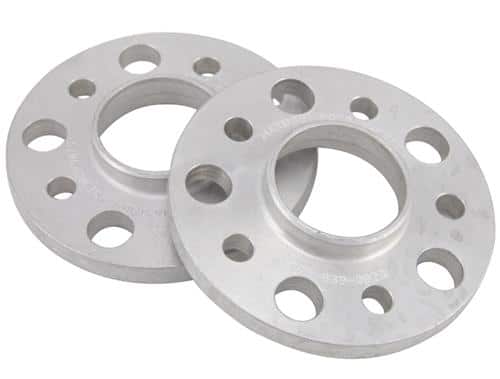
This design slides over your existing lug nuts, but they also have grooves that connect to the vehicle’s hub.
These grooves transfer the torque to the hub itself, which takes a ton of stress off the studs. You’ll still need to make sure the studs are long enough to attach the lug nuts to, but if you have enough thread exposed, they are completely safe.
Lug-Centric (Floating) Slip-On Spacers
Lug-centric spacers mount directly to your vehicle’s lug nuts, and that’s where they disperse all of your vehicle’s weight. The most significant difference between a hub-centric and a lug-centric slip on wheel spacer is whether it has notches for the hub.
Lug-centric slip-on style spacers do not have these notches. This puts all the stress on the studs, which is not safe.
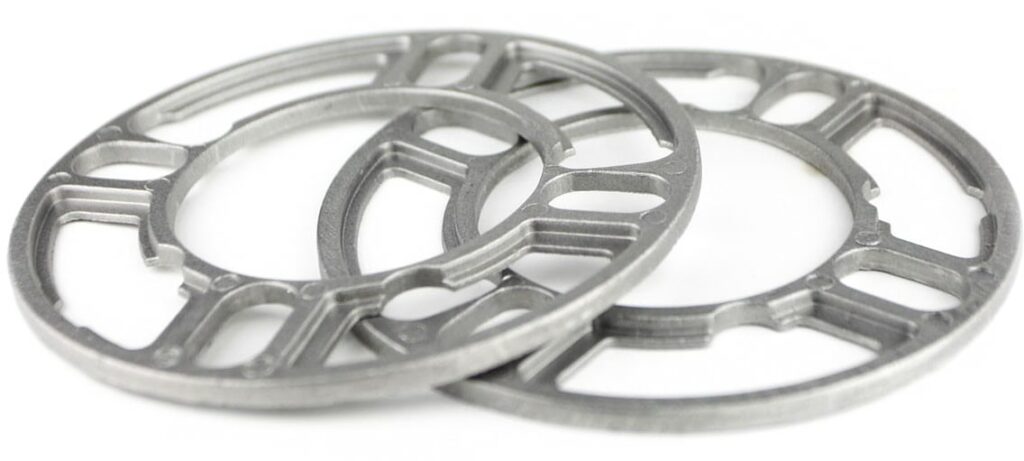
Are Slip-On Wheel Spacers Safe?
If you install everything correctly, slip-on units are indeed safe — given that you’re working with hub-centric spacers and not lug-centric.
First, you need to ensure that your existing lug nuts will have enough thread exposed to reattach the wheel safely. You should be able to spin the lug nut at least ten times before it starts to get snug.
If you don’t have enough thread exposed, you’ll need to either use a smaller spacer or get extended studs. For this reason, the slip-on style of spacers are commonly made in 15mm or thinner variants.
If you do find yourself needing to use longer studs, remember to buy a wheel stud installation tool. This will save you a lot of time and help to be sure that the new studs aren’t damaged during installation.
How Safe are Wheel Spacers?
While their application is perfectly safe, they can have disastrous consequences if you don’t install them correctly. Wheel spacer safety is an extremely important issue, and we don’t want you to run into any problems because of something you didn’t know.
Whether you’re looking to use them on your daily driver or install them on your race car, we’ll break down some common mistakes to avoid here and let you know how many spacers are too many.
Are Wheel Spacers Safe for Daily Driving?
When installed correctly, not only are they safe, but they can end up making your car safer than the stock setup too.
You’ll have a wider track on the axle that you have installed spacers on. This probably means you’ll have a positive scrub radius, which can make your car feel more stable while cornering.
While this isn’t a huge advantage for daily driving, the benefits are still there. You’ll really feel the difference in the mountains.
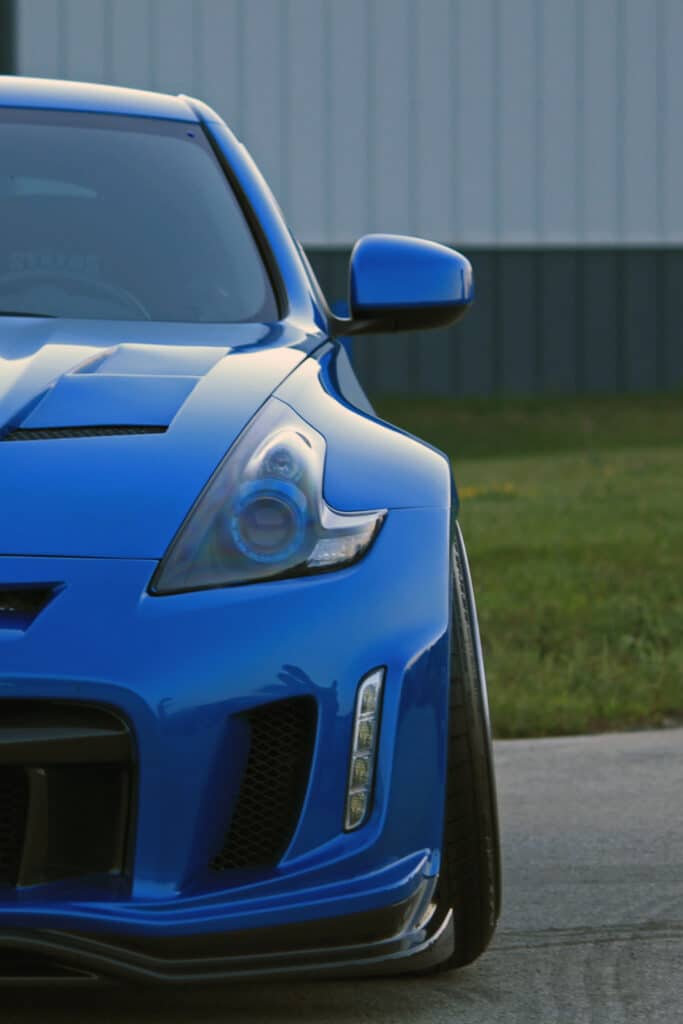
You can install wheel spacers on a single axle for aesthetic purposes for daily driving, just keep in mind that your car’s handling may not feel as balanced.
Are Wheel Spacers Safe for Racing Too?
If you’re looking to use spacers on the track, you’ll specifically need hub-centric units over lug-centric ones.
All the added pressure from turning at such high speeds around the track can shear lug-centric spacers straight off, which can have life-threatening consequences.
Are Wheel Spacers Safe on Trucks?
Their use is fine for smaller vehicles because of their weight, but what happens when you install them on trucks?
Again, it all depends on the type of spacer in question. While the additional weight may be too much for lug-centric spacers to handle, hub-centric wheel spacers won’t give you any trouble.

They’ll easily be able to handle the vehicle’s weight without causing any catastrophic damage. Just expect a little extra wear and tear on your hubs as usual.
How Many Spacers Are Too Many?
While stacking two wheel spacers is typically safe, there is too much of a good thing. When you reach that point depends on a variety of factors, namely how you’re achieving that extra space.
It’s fine to have extra spacers as long as:
- everything stays hub-centric
- both the front and wheel rears are spaced correctly
- there is enough clearance from the fender wall to the tires

So What Are the Negatives?
The key thing to know about installing spacers is that they can cause greater wear and tear on your car’s other parts.
Your hubs are more likely to wear out faster with negative offset wheels or wheel spacers, and your suspension may have to work harder too.
You’ll also want to make sure that your vehicle can handle the wider track and that you’re not making your vehicle too wide for the road.
Overall, don’t compromise on quality when it comes to these upgrades. If you’re using low-quality spacers, you’re going to run into problems.
How Do I Install and Adjust Them?
For bolt-on spacers, you need to bolt the spacers directly to the hub. From there, all you need to do is put the wheel on and make sure that you have enough threads in the spacer to keep everything tight.
The original studs should extend through the entire spacer or else you won’t have enough of a connection and you’ll need extended studs.
For slip-on spacers, all you need to do is slide the wheel spacer directly over the studs and torque down the existing lug nuts. Yes, do it properly and use a torque wrench!
For step by step instructions, make sure to read our guide on How To Install Wheel Spacers Correctly.
Wheel Spacer Safety: Are They Right for Your Vehicle?
While they offer some performance advantages, not everyone wants them — and that’s perfectly fine.
But for those that do, not only can you get better handling and traction, but you also get a distinctive look that many car enthusiasts love.
It doesn’t matter what you drive — wheel spacers can make your car look different from the factory in a very subtle way. Just keep in mind that you might need to roll your fenders or lift your vehicle to get enough clearance, and there is too much of a good thing.
What’s your take? Are you planning on installing them soon? Let us know your thoughts on this controversial upgrade in the comments below!


1 comment
I don’t see anything said about the distribution of the vehicle’s weight AWAY from the center of the load bearing bearings! Seems to me the factory setup, places the load centered through the middle of the wheel and wheel bearing. If you move the tires and wheels further out you create a mismatch between where the load is carried versus where the bearing is located. The load center point, shifts away from the bearings center! In a factory situation the center of the wheel, aligns with the center of the bearing. Therefore the vehicle’s weight is centered across the load bearing components, the wheel and the bearing. When you add spacers the wheel center and the bearing center do NOT align. The mismatch MAY not matter much if the mismatch is small and the weight is centered WITHIN the bearing. However, with some of the wheel spacing I’ve seen, especially on pickup trucks, seems to me a MUCH less strong situation is created. Besides, personally, I think the look is ridiculous!